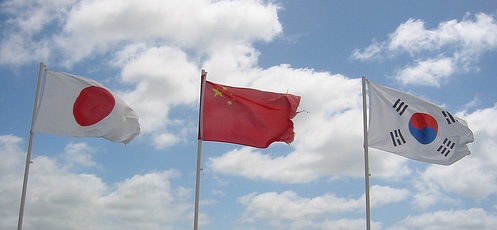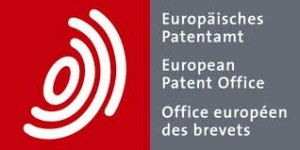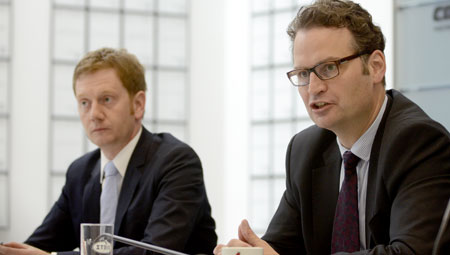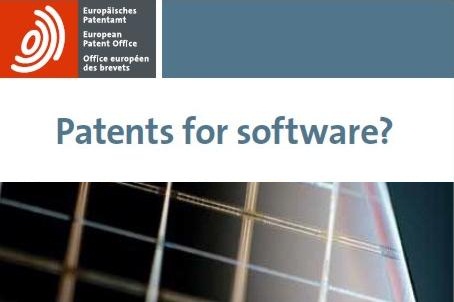 In this ealier posting on the America Invents Act we reported on the new Covered Business Methods Review (faq, info) which allows to challenge any business method patent before the Patent Trial and Appeal Board (PTAB) as soon as it is enforced against an accused infringer.
In this ealier posting on the America Invents Act we reported on the new Covered Business Methods Review (faq, info) which allows to challenge any business method patent before the Patent Trial and Appeal Board (PTAB) as soon as it is enforced against an accused infringer.
From a European perspective, this new proceedings seems particularly interesting as the question as to whether or not a claim falls under the CBM review is answered by 37 CFR § 42.301 as follows:
(a) Covered business method patent means a patent that claims a method or corresponding apparatus for performing data processing or other operations used in the practice, administration, or management of a financial product or service, except that the term does not include patents for technological inventions.
(b) Technological invention. In determining whether a patent is for a technological invention solely for purposes of the Transitional Program for Covered Business Methods (section 42.301(a)), the following will be considered on a case-by-case basis: whether the claimed subject matter as a whole recites a technological feature that is novel and unobvious over the prior art; and solves a technical problem using a technical solution.
This definition is surprisingly similar to what European case law (and German case law) has developed to define “methods for [...] doing business [...] and programs for computers as such” according to Art. 52 (2), (3) EPC (and § 1 (3), (4) PatG). Even further, the requirement of a “technological feature that is novel and unobvious” seems to correspond to the well-established Comvik approach (cf. T 641/00, 2002) of the EPO Boards of Appeal, according to which non-technical features cannot contribute to novelty and inventive step.
15th UPC Draft Rules of Procedure open for Public Consultation
Yesterday, the much awaited website of the UPC Preparatory Committee went live under the domain www.unified-patent-court.org. A main purpose of this website is to inform the public about the Committee’s work and the UPC as such (see e.g. Q&A section). One of the most important tasks of the Committee is the preparation of the Rules of Procedure of the future Unified Patent Court.
After an inofficial 15th Draft has been leaked early June, the official 15th draft of the Rules of Procedure has been published yesterday and opened for
public consultation until 1 October 2013.
Written comments are to be submitted to secretariat@unified-patent-court.org. So, please, colleagues, readers, and fellow bloggers, study the official draft and make submissions to the Preparatory Committee if necessary.
The further procedure after closure of the public consultation is explained as well:
[...] the Committee shall after closure of the written phase of the public consultation ask the Drafting Committee to evaluate the contributions received and to make proposals and comments ensuing from the public consultation. Further, the Committee intends to organise a public hearing on the draft rules of procedure in early 2014. The European Commission shall be asked to advise on the compatibility of the Rules of Procedure with European Union law. This will form the basis for the Committee’s Legal Framework Working Group to prepare the draft Rules of Procedure for approval by the Committee. As with all of the Committee’s preparatory work, also the Rules of Procedure will need to be adopted by the UPC’s Administrative Committee once it has been established.
The official version of the 15th draft differs form the inofficial version in a number of ways. One significant difference relates to Rule 286 governing, inter alia, the conditions under which non-lawyers (i.e. professionals that are not attorneys-at-law) may independently represent cases before the UPC. This rule has previously been criticised on this blog because of its striking lack of clarity (see here for the inofficial 15th draft version and here for the 14th draft version), as the 14th draft contained the unclear term “jurist” and the inofficial 15th draft contained an even more unclear recursive definition of the term “lawyer”.
Clarified Rule 286 (1) of the 15th draft RoP now reads as follows, with the crucial sentence highlighted:
A representative pursuant to Article 48(1) of the Agreement shall lodge at the Registry a certificate that he is a lawyer authorised to practise before a court of a Contracting Member State. Lawyers within the meaning of Article 48(1) of the Agreement are also persons possessing a law degree (jurist) who are authorised by the Swedish Patent Attorneys Board or equivalent body in a Contracting Member State. They shall lodge a certificate evidencing such authorisation. In subsequent actions the representative may refer to the certificate previously lodged.
 One of our most successful presentations on business trips to Asia in recent years was the one about “Dos and Don’ts in European Filings” covering many practical hints that should be observed – possibly already at the drafting stage – upon filing direct EP applications with the EPO or entering the EP regional phase via the PCT route.
One of our most successful presentations on business trips to Asia in recent years was the one about “Dos and Don’ts in European Filings” covering many practical hints that should be observed – possibly already at the drafting stage – upon filing direct EP applications with the EPO or entering the EP regional phase via the PCT route.
At KSNH we are very happy to announce that an article by my colleagues Jochen Höhfeld and Shino Tanaka summarising this lecture has been recently accepted for publication by major IP journals in Japan, China, and Korea:
Japanese:
JPAA Journal “Patent”, Vol.66, No.4, 2013.3, pp. 14-19
China IP News, 2013-05-31, issue 1427, p. 8 (part 1)
China IP News, 2013-06-07, issue 1429, p. 8 (part 2)
Korean:
KPAA Association Journal, May 20, 2013, pages 6, 7
(see also here, No. 162 제810호, 2013.05.20)
Basically, the articles cover the following topics:
Claim Drafting
- Limitation of number of claims
- One independent claim per category
- Unity of the invention
- Reference numnerals
- Multiple independent claims
- Functional claim features
- Clarity of the claim language
- Claims in two-part-form (Jepson-type claims)
- Claim amendments
- Number of pages
- Basis for claim amendments
- Discussion of prior art
- Abstract
- Incorporation by reference
Organisational issues:
- Format of pages
- Entering the regional phase before the EPO (Euro-PCT)
- Regional pahse entry with the EPO acting as International Search Authority
- Designation of the inventor
- Divisional applications before the EPO
On an Official blog website blogfraktion.de of the parliamentary group of the Christian Democratic Union / Christian Social Union (CDU/CSU) in the German Bundestag I recently stumbled upon a green paper concerning copyright in the digital society (Diskussionspapier der CDU/CSU-Bundestagsfraktion zum Urheberrecht in der digitalen Gesellschaft) presented by Deputy Party Whips Mr Michael Kretschmer and Mr Günter Krings. While the main topic of this text, of course, is directed to copyright issues, we also can find a single paragraph devoted to so-called software patents or, more technically, patents on computer-implemented (respectively implementable) inventions as follows (I did some plain copy/paste operation and refrain from correcting spelling errors in the German original):
8. Urheberrecht statt Softwarepatenten
Computerprogramme werden richtigerweise durch das Urheberrecht geschützt. „Softwarepatente“ auf Quell-Codes laufen dem urheberrechtlichen Schutzzweck zuwider. Der urheberrechtliche Schutz ist flexibler und innovationsfördernder, weil dazu kein aufwendiges und teures Patentierungsverfahren notwendig ist. Die Anwendbarkeit des Urhebervertragsrechts stärkt außerdem die Programmierer (Urheber) gegenüber den Softwarefirmen (Verwertern).
Ein Richtlinienvorschlag der EU-Kommission, eine EU-einheitliche Patentierungspraxis für Software zu schaffen, ist 2002 gescheitert. Die CDU/CSU-Bundestagsfraktion lehnt auch weiterhin jede Ausweitung der Patentierungspraxis im Softwarebereich ab.
I would like to offer my own translation as set out below:
8. Copyright instead of software patents
Computer programs are rightly protected by copyright. “Software patents” on source code run contrary to the purpose of protection by copyright. Protection by copyright is more flexible and encourages innovation more because it does not require intricate and expensive patenting proceedings. Moreover, the applicability of the [German] law of contracts on copyrights strengthens the coders (creators) compared to software companies (exploiters).
A Draft proposal of the EU Commission for creating a unitary practice of patenting of software has failed in 2002. The parliamentary group of the CDU/CSU in the Bundestag maintain their rejection of any broadening of the practice of patenting in the field of software.
The first sentence of this statement asserting that computer programs are rightly protected by copyright is one of the few snippets of information from the text as quoted above which is by and large correct insofar historically the Council Directive 91/250/EEC of 14 May 1991 on the legal protection of computer programs had stipulated in its Article 1 that Member States shall protect computer programs, by copyright, as literary works within the meaning of the Berne Convention for the Protection of Literary and Artistic Works. However, the term “rightly” (“richtigerweise” in German) might, at least for German ears, be construed like suggesting that software protection by copyright is the only (proper and legitimate) way to define software-related Intellectual Property. This is not true. Article 9 paragraph 1 of the Directive says (emphasis added):
The provisions of this Directive shall be without prejudice to any other legal provisions such as those concerning patent rights, trade-marks, unfair competition, trade secrets, protection of semi-conductor products or the law of contract. [...]
In the next sentence: “Software patents” on source code run contrary to the purpose of protection by copyright, a stark theory is proclaimed deepening this initial stub of mis-understanding the law by setting forth in more detail there is sort of a contradiction between copyright and patent law. In fact, copyright law and patent law are mapped to different aspects of computer software, respectively:
- From a copyright-centred point of view, a computer program is seen as a text (source code).
- From a patent-centred point of view, a computer program is seen as an expression of functionality or of dynamic semantics described by operational and/or denotational semantics, i.e. it is viewed as an expression of run-time behaviour.
Copyright and patent rights can emerge from one and the same set of facts of a case. This phenomenon is not confined to copyright and patent law concerning software. Take, for example, a mud wing of a car:
Continue reading »
This is a follow-up to Volker ‘Falk’ Metzler’s previous posting titled In Defense of Articles 6 to 9 of the Unitary Patent Regulation and, in particular, to the discussion induced by it.
As can be learnt from the public discussion of the role of the Court of Justice of the European Union (CJEU) and of the European Court of Justice (ECJ) in the context of the planned Proposal for a Regulation of the Council and the European Parliament implementing enhanced cooperation in the area of the creation of unitary patent protection as well as with regard to the still unfinished Draft agreement on a Unified Patent Court there appears to exist – at least in some quarters – a sort of general discontent with the work of those judges presiding in Luxembourg over the entire body of EU law.
For example, our reader Derek Clapton (maybe a pseudonymous author identification?) puts his view on the CJEU in this brief summarising sentence:
To say that the ECJ “is the best functioning institution of the Union” is like saying that Amsterdam is the highest place in the Netherlands – possibly true, but an unimpressive boast nonetheless.
Well, I think it might be interesting to have some deeper insight into the factual basis of this damnation. Mr Clapton gives us a clue when he writes:
If, in answering questions such as how to determine the scope of protection of a patent claim, the ECJ introduces the same degree of uncertainty in patent law as it has in the case of trade mark law, the EU patent system will fail its users, which may lead to manufacturers deciding to locate new factories outside of the court’s jurisdiction. In such case, Spain may be well advised to remain outside of the proposed EU patent arrangements.
And another commenter Peter Lustig (maybe another pseudonymous identification?) argues:
Usually, one would expect renowned senior practitioners of his kind to join him and support his argumentation – there appear to be none so far. Also, the Article 6 to 9-issue is only one in a row of objections, some going to the very core of the project (e. g. the compatibility with the AETR case law of the CJEU) and still remaining unaddressed. With all due respect, but Professor Tilmann’s outstanding reputation should not be allowed to replace founded answers to legitimate questions.
And, even Dr. Jochen Pagenberg himself joins the line of comments by arguing, inter alia, as follows:
If one wants a really unattractive, inefficient, unpredictable and probably extremely expensive patent court system, then we will get it; one must only give the ECJ a chance to receive as many referrals in patent law as possible.
If one wants to see substantive patent law in Europe to be decided by judges without any solid knowledge and experience in this field, then one must involve the ECJ whenever possible.
Well, is this real? It is fair to say that as a humble patent and trade mark attorney I never shall deal with those EU judges in Luxembourg myself. But I have to carefully read important decisions, in particular in the field of trade mark law. And, yes, there are decisions of the Court which I find questionable but that also holds for me when studying decisions from German Courts. A well-known and a bit semi-ironic German proverb says that in court and on the high seas we all are in the hands of the Lord, indicating that awaiting a decision of a Court always bears a momentum of unpredictability. Are the high seas of the CJEU / ECJ excessive in this respect?
Continue reading »
During the past 15 years the Boards of Appeal of the EPO have developed a consistent case law as to the pragmatic problem/solution approach for assessing patentability pursuent Art 52 -57 EPC. In our earlier overview on
EPO case law regarding patentability of software inventions,
to which this posting is meant as a more practical continuation, we briefly characterised the EPO’s main examination approach:
[M]odern case law [of the EPO Boards of Appeal on software inventions], especially the suggestion in T 1173/97 that the “technical contribution” is an inventive step consideration and the observation in some early cases (e.g. T 38/86 and T 65/86) that the “inventive contribution” must lie in a “field of technology”, almost naturally lead to the problem-solution approach as developed in T 641/00 (COMVIK) and T 258/03 (Hitachi) and theoretically justified in T 154/04 (Duns).
This approach nowadays is the crucial test to differentiate between a technical contribution implementing a non-technical concept (e.g. a business method) and an inventive contribution in a technical field (e.g. an embedded control software). Its general idea is that only the technical features of a claim may be taken into account for assessing inventive step, while the non-technical features form a basis for formulating the underlying problem, with the effect that the non-technical features may render the technical solution obvious.
This approach is widely accepted among practitioners as enhancing legal security for applicants since it represents a comprehensible benchmark against which EPO decisions are subject to verifiction.
 As something like a pre-Christmas present, the European Patent Office startet off into the bright future of online communication and interaction last week.
As something like a pre-Christmas present, the European Patent Office startet off into the bright future of online communication and interaction last week.
On 13 December 2011 a President’s Decision and a related Notice introduced the notification of communication in selected EPO proceedings via online mailboxes (entered into force on 15 December 2011), while a Notice dated 15 December 2011 informed on the newly launched web-based consultation platform for proposed changes to European patent law and practice.
The k/s/n/h::law blog
Some of the patent attorneys of the KSNH law firm have joined their efforts to research what is going on in the various branches of IP law and practice in order to keep themselves, their clients as well as interested circles of the public up to date. This blog is intended to present results of such efforts to a wider public.
Blog Archives
- November 2013 (2)
- October 2013 (1)
- September 2013 (1)
- August 2013 (2)
- July 2013 (3)
- June 2013 (5)
- March 2013 (5)
- February 2013 (4)
- January 2013 (5)
- December 2012 (5)
- November 2012 (5)
- July 2012 (5)
- June 2012 (8)
- May 2012 (5)
- April 2012 (3)
- March 2012 (4)
- February 2012 (5)
- January 2012 (6)
- December 2011 (12)
- November 2011 (9)
- October 2011 (9)
- September 2011 (4)
- August 2011 (7)
- July 2011 (4)
- June 2011 (1)
Blog Categories
- business methods (6)
- EPC (7)
- EPO (12)
- EU law (92)
- ACTA (8)
- CJEU (4)
- Comitology (1)
- competition law (2)
- Enforcement (6)
- EU Unified Patent Court (62)
- FTA India (1)
- TFEU (2)
- Trade Marks (5)
- European Patent Law (37)
- German Patent ACt (PatG) (1)
- German patent law (5)
- Germany (6)
- Pirate Party (3)
- International Patent Law (4)
- PCT (2)
- IP politics (10)
- licenses (2)
- Litigation (5)
- Patentability (7)
- Patents (12)
- Piratenpartei (2)
- Software inventions (10)
- Uncategorized (9)
- Unitary Patent (24)
- US Patent Law (4)
Comments
- kelle on Germany: Copyright Protection More Easily Available For Works Of “Applied Arts”
- Time Limits & Deadlines in Draft UPCA RoP: Counting The Days - KSNH Law - Intangible.Me on Wiki Edition of Agreement on Unified Patent Court Agreement (UPCA)
- Time Limits & Deadlines in Draft UPCA RoP: Counting The Days | ksnh::law on Wiki Edition of Agreement on Unified Patent Court Agreement (UPCA)
- Wiki Edition of Agreement on Unified Patent Cou... on Wiki Edition of Agreement on Unified Patent Court Agreement (UPCA)
- European Commission Takes Next Step Towards Legalising Software Patents in Europe | Techrights on EU Commission publishes Proposal of amendend Brussels I Regulation for ensuring Enforcement of UPC Judgements
Blogroll
- 12:01 Tuesday
- America-Israel Patent Law
- Anticipate This!
- AwakenIP
- BlawgIT
- BLOG@IPJUR.COM
- BP/G Radio Intellectual Property Podcast
- Broken Symmetry
- Class 46
- Director's Forum: David Kappos' Public Blog
- Gray on Claims
- I/P UPDATES
- IAM Magazine Blog
- Intellectual Property Intelligence Blog
- IP Asset Maximizer Blog
- IP CloseUp
- IP Dragon
- IP Watch
- IP Watchdog
- IPBIZ
- ipeg
- IPKat
- ITC 337 Law Blog
- Just a Patent Examiner
- K's Law
- MISSION INTANGIBLE
- Patent Baristas
- Patent Circle
- Patent Docs
- Patently Rubbish
- PatentlyO
- Patents Post-Grant
- Reexamination Alert
- SPICY IP
- Tangible IP
- The 271 Patent Blog
- The Intangible Economy
- THE INVENT BLOG®
- Think IP Strategy
- Tufty the Cat
- Visae Patentes
The KSNH blogging landscape


This blog and the German-language sister blog k/s/n/h::jur link to the two popular and privately run blogs IPJur und VisaePatentes and continue their work and mission with a widened scope and under the aegis of our IP law firm.
ksnhlaw on Twitter
- No public Twitter messages.
 KSNH::JUR Feed (german)
KSNH::JUR Feed (german)- Ist Verschlüsselung passé? September 6, 2013Auf verschiedenen Feldern beruflicher Praxis ist dafür zu sorgen, dass Kommunikation vertraulich bleibt. Die trifft beispielsweise für Ärzte zu, aber auch für Anwälte, darunter auch Patentanwälte. Einer der zahlreichen Aspekte, die in diesem Zusammenhang eine Rolle spielen, ist die Technik, um die Vertraulichkeit beruflicher Kommunikation sicherzustellen. Wa […]
- EU-Einheitspatent: Demonstrativer Optimismus und Zahlenmystik allerorten – Naivität oder politische Beeinflussung? June 26, 2013Nach mehreren vergeblichen Anläufen zur Schaffung eines EU-weiten Patentsystems wurde 1973 als Kompromiss das Europäische Patentübereinkommen unterzeichnet, welches unabhängig von der seinerzeit noch EWG genannten Europäischen Union System zur zentralisierten Patenterteilung mit nachgeordnetem Einspruchsverfahren durch das Europäische Patentamt schuf. Wie wi […]
- Moderne Zeiten oder: DPMA und Patentgericht streiten über die elektronische Akte April 25, 2013Bekanntlich hat das Deutsche Patent- und Markenamt (DPMA) im Jahre 2013 mit der rein technischen Fertigstellung der Einrichtungen zur elektronischen Akteneinsicht einen wichtigen Meilenstein seines Überganges von der Papierakte zur “elektronischen Akte” erreicht. Im DPMA werden aber bereits seit dem 01. Juni 2011 Patente, Gebrauchsmuster, Topografien und erg […]
- Gutachten zu Forschung, Innovation und technologischer Leistungsfähigkeit Deutschlands 2013 March 11, 2013Unter dem Datum vom 28. Februar 2013 ist die Bundestags-Drucksache 17/12611 veröffentlicht worden Sie trägt den Titel Unterrichtung durch die Bundesregierung - Gutachten zu Forschung, Innovation und technologischer Leistungsfähigkeit Deutschlands 2013. Die Bundesregierung legt dem Deutschen Bundestag seit dem Jahr 2008 […]
- 3D-Printing: Zum Filesharing von 3D-Modelldaten February 25, 2013In meiner kleinen zuvor angekündigten Reihe über rechtliche Aspekte des 3D Printing komme ich heute auf die Frage zu sprechen, ob die Hersteller von Gerätschaften es hinnehmen müssen, wenn Ersatztreile davon – vom Brillengestell über Smartphone-Gehäuseteile bis hin zu Rastenmähermotor-Abdeckungen – gescannt und die daraus […]
- Ist Verschlüsselung passé? September 6, 2013






